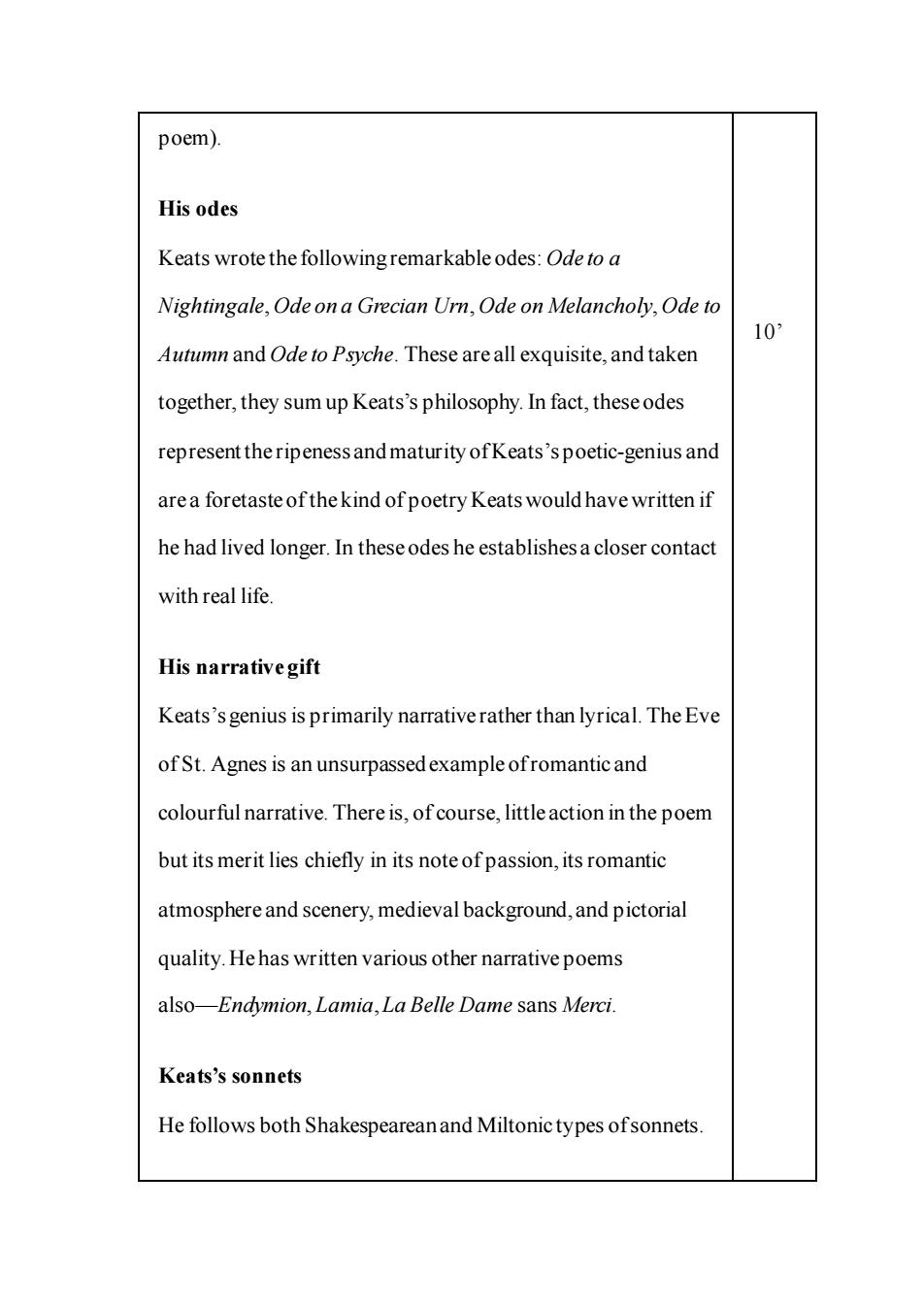正在加载图片...

poem). His odes Keats wrote the followingremarkableodes:Ode to a Nightingale,Ode on a Grecian Urn,Ode on Melancholy,Ode to 10: Autumn and Ode to Psyche.These are all exquisite,and taken together,they sum up Keats's philosophy.In fact,theseodes represent the ripeness and maturity ofKeats's poetic-genius and are a foretaste of the kind of poetry Keats would have written if he had lived longer.In theseodes he establishesa closer contact with real life. His narrativegift Keats's genius is primarily narrativerather than lyrical.The Eve ofSt.Agnes is an unsurpassed example ofromantic and colourful narrative.There is,ofcourse,little action in the poem but its merit lies chiefly in its note ofpassion,its romantic atmosphere and scenery,medieval background,and pictorial quality.He has written various other narrative poems also-Endymion,Lamia,La Belle Dame sans Merci Keats's sonnets He follows both Shakespeareanand Miltonictypes ofsonnetspoem). His odes Keats wrote the following remarkable odes: Ode to a Nightingale, Ode on a Grecian Urn, Ode on Melancholy, Ode to Autumn and Ode to Psyche. These are all exquisite, and taken together, they sum up Keats’s philosophy. In fact, these odes represent the ripeness and maturity of Keats’s poetic-genius and are a foretaste of the kind of poetry Keats would have written if he had lived longer. In these odes he establishes a closer contact with real life. His narrative gift Keats’s genius is primarily narrative rather than lyrical. The Eve of St. Agnes is an unsurpassed example of romantic and colourful narrative. There is, of course, little action in the poem but its merit lies chiefly in its note of passion, its romantic atmosphere and scenery, medieval background, and pictorial quality. He has written various other narrative poems also—Endymion, Lamia, La Belle Dame sans Merci. Keats’s sonnets He follows both Shakespearean and Miltonic types of sonnets. 10’